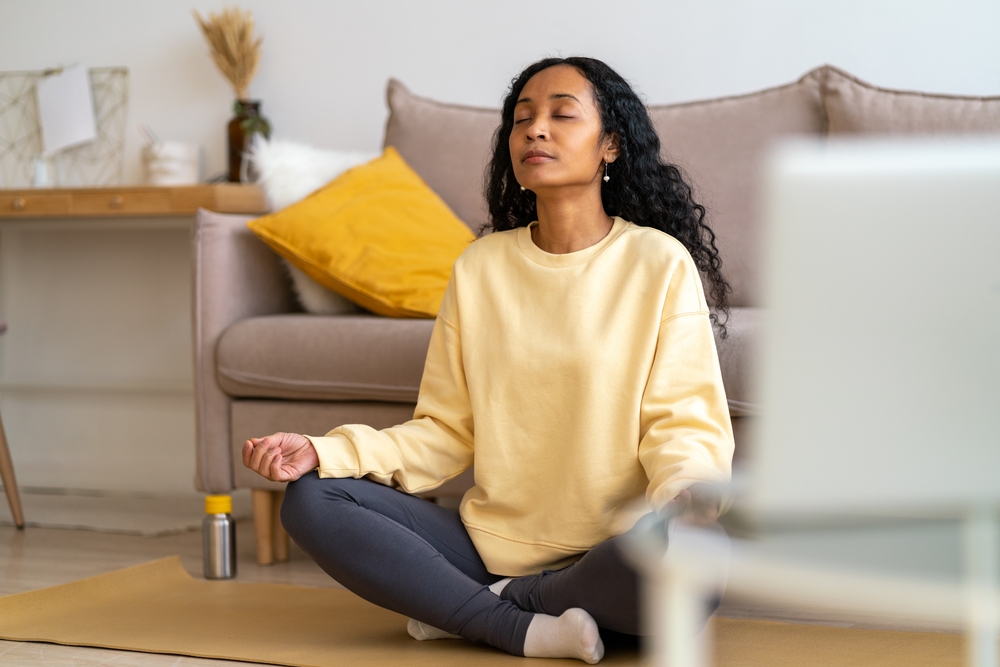Breathwork training sees renewed popularity

Although breathwork has long been a tool used by integrative practitioners to relieve mental, emotional, and physical tension, the practice has seen a resurgence in recent years with more individuals seeking to learn the practice and corporations offering breathwork sessions as part of their workplace wellness strategy.
“Since the pandemic, there’s been a renewed focus on health and wellbeing,” said Kien Vuu, MD, a concierge performance and longevity physician and owner of VuuMD Longevity and Performance Clinic in Los Angeles, California. “Breathwork helps to better manage stress, while also increasing energy and performance.”
An October 2022 report from the American Psychological Association found that a majority of Americans are stressed by government and political divisiveness, historic inflation levels, and widespread violence.
As the author of The Thrive State: Your Blueprint for Optimal Health, Longevity, and Peak Performance, Vuu has served as a keynote speaker, offering breathwork workshops to corporations, as well as individual one-on-one sessions to executives. He says a growing body of research has shown breathwork can reduce stress and anxiety, while also improving resiliency.
He says that while breathwork is often taught on a one-to-one basis, it can also be taught in group settings to companies, non-profits, and other organizations.
“I’ll often guide a longer breathwork session using a specific intention using goals the group hopes to achieve,” Vuu said. “These sessions can last 30-60 minutes and allow individuals to clear their minds, find balance, and see room for opportunity and growth.”
Vuu said breathwork can help individuals shift from a “stress state” to a “thrive state,” while also offering additional health benefits. For integrative practitioners, adding breathwork to their practice can complement other health services such as anti-aging, acupuncture, meditation, and talk therapy.
In his own practice, Vuu has recommended breathwork to patients who needed to break down barriers to successfully achieve optimal health and wellbeing.
He credits breathwork with helping him to make positive changes in his own life. Six years ago, Vuu was overweight and struggled with both and high blood pressure and diabetes. At the time, he worked as an interventional radiologist, but realized conventional medicine wasn’t giving him the tools he needed to be healthy. Wanting to make significant lifestyle changes to improve his health and wellbeing, he underwent training in nutrition, performance and longevity medicine, and became certified by the American Board of Anti-Aging and Regenerative Medicine.
“I learned that breathwork is an effective way to quiet the brain’s default mode network (DMN) activity,” Vuu said. “It helps to refocus the brain and keep our mind from reliving traumatic events from the past or stressing about what might happen in the future.”
A study published in the journal, Biological Psychiatry, found that people suffering from depression had increased brain functioning in the DMN and that practices such as meditation and breathwork can help slow down the DMN.
Ana Lilia, a certified breathwork teacher, and intuitive guide, in Los Angeles, California, also experienced anxiety in her past and learned how the practice of breathwork activated the parasympathetic nervous system, immediately releasing endorphins and calming the brain.
Today, she offers breathwork training to both groups and individuals and has facilitated breathwork sessions with companies including WeWork, Hyundai, and Capitol Records, as well as countless individuals.
“Breathwork offers many benefits, including healing from trauma or grief, increasing mental clarity and focus and promoting a better night’s sleep,” she said.
Lilia said she encourages her clients to find ways to integrate breathwork into their lives and to make the practice a priority. “Even practicing five minutes of breathwork can decrease physical and emotional stress,” she said.
To combat employee stress, Lilia offers breathwork programs to corporations both onsite and at retreats. With many employees continuing to work remotely, she also uses Zoom to facilitate breathwork training and to discuss different breathwork techniques.
“Breathwork meditation can be done by actively breathing, using the two-stage pranayama technique, consisting of two deep inhales through the mouth and one exhale,” Lilia said. “This results in reduced anxiety and increased mental clarity and focus.”
When leading a breathwork class, Lilia said she also uses music and aromatherapy, offering clients a more calming experience.
A study published in Scientific Reports found that in healthy adults with no sleep disorders, who used slow breathing exercises combined with music before going to bed, improved sleep quality.
While breathwork can provide a calming effect, Lilia said the practice can also be used to increase energy and clarity.
For an energy boost, she teaches her clients to take short, quick inhales and exhales for 30 counts, then pause for 15 seconds and resume active breathing again for 30 counts.
“We all take 20,000 breaths a day, but many people aren’t breathing correctly,” Lilia said. “When we don’t breathe properly, it can create an imbalance in the oxygen and carbon dioxide exchange that can contribute to anxiety and fatigue. By practicing breathwork exercises under the guidance of a trained facilitator, individuals can learn how to manage anxiety and stress.”




















SHARE